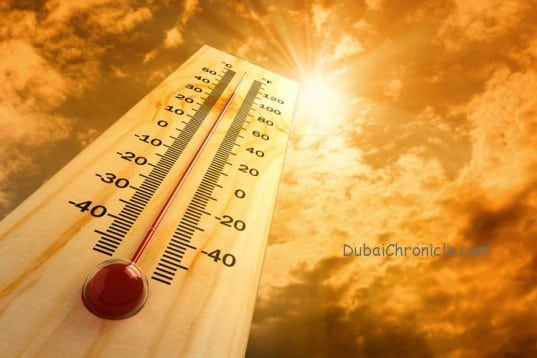
Within this century, parts of the Arabian Gulf region could be hit with unprecedented events of deadly heat as a result of climate change, according to a study of high-resolution climate models.
The research reveals details of a business-as-usual scenario for greenhouse gas emissions, but also shows that curbing emissions could forestall these deadly temperature extremes.
The conditions in the Arabian Gulf region, including its shallow water and intense sun, make it a specific regional hotspot where climate change, in absence of significant mitigation, is likely to severely impact human habitability in the future.
The study, published in the journal Nature Climate Change, was carried out by Elfatih Eltahir, a professor of civil and environmental engineering at MIT, and Jeremy Pal PhD ’01 at Loyola Marymount University.
Running high-resolution versions of standard climate models, the researchers found that many major cities in the region could exceed a tipping point for human survival, even in shaded and well-ventilated spaces. Eltahir says this threshold “has, as far as we know … never been reported for any location on Earth.”
That tipping point involves a measurement called the “wet-bulb temperature” that combines temperature and humidity, reflecting conditions the human body could maintain without artificial cooling. That threshold for survival for more than six unprotected hours is 35 degrees Celsius, or about 95 degrees Fahrenheit.
But the severe danger to human health and life occurs when such temperatures are sustained for several hours, which the models show would occur several times in a 30-year period toward the end of the century under the business-as-usual scenario used as a benchmark by the Intergovernmental Panel on Climate Change.
The Gulf region is especially vulnerable, because of a combination of low elevations, clear sky, water body that increases heat absorption, and the shallowness of the Gulf itself, which produces high water temperatures that lead to strong evaporation and very high humidity.
The models show that by the latter part of this century, major cities such as Doha, Qatar, Abu Dhabi, and Dubai in the United Arab Emirates, and Bandar Abbas, Iran, could exceed the 35 C threshold several times over a 30-year period. What’s more, hot summer conditions that now occur once every 20 days or so, “will characterize the usual summer day in the future.”
While the other side of the Arabian Peninsula, adjacent to the Red Sea, would see less extreme heat, the projections show that dangerous extremes are also likely there, reaching wet-bulb temperatures of 32 to 34 C. This could be a particular concern, because the annual Hajj, or annual Islamic pilgrimage to Mecca — when as many as 2 million pilgrims take part in rituals that include standing outdoors for a full day of prayer — sometimes occurs during these hot months.
While many in the Gulf’s wealthier states might be able to adapt to new climate extremes, poorer areas, such as Yemen, might be less able to cope with such extremes, the authors say.



































